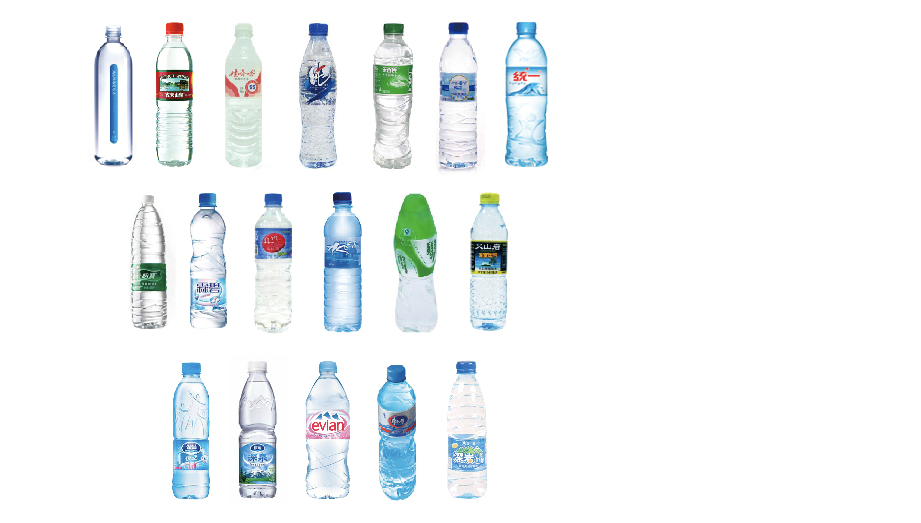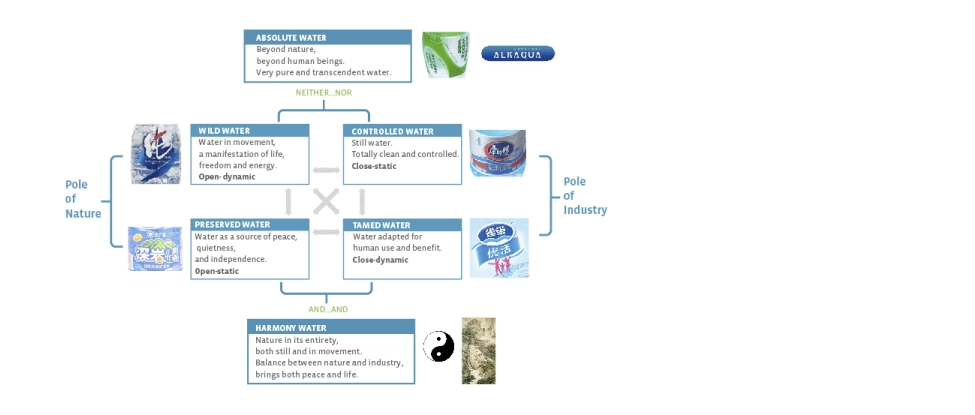

In the expansive realm of bottled water consumption, China stands as the world’s third-largest consumer market. Amidst the multitude of companies, both large and small, vying for consumer attention on store shelves, the decision of which bottle to choose has become a perplexing task. This dilemma opens the door to the significance of semiotic analysis in decoding the subtle signs, symbols, and meanings embedded in bottled water branding. Explore how semiotics, the study of signs and symbols, can unravel the layers of communication within this competitive market, guiding consumers to make informed choices based on visual and symbolic cues. Delve into the intricate world of semiotics to navigate the diverse landscape of bottled water options in the thriving Chinese market.
You may have found yourself in this situation in China- in your quest for a simple bottle of water you are bombarded with numerous options. Yet, you still choose one brand eventually and may even keep buying it without knowing what makes you purchase this bottle of water over the others. In this case, you are living proof that semiotic analysis can be used to develop effective packaging, to segment the market, or to identify potential areas for new product development.
Michael Levine, author of A Branded World, stated: “In branding, as in magic, the effect is lost if the effort is visible” (Levine, 2003, p. 5). Therefore, branding is, in some ways, entirely semiotic, and conveying the intended message using signs and symbols is crucial for effective branding.
Introduction to Semiotics
So what is semiotics? Simply put, semiotics is a science that analyzes signs and symbols, including their appearance, their meaning, and the impact their message has on people. Signs and symbols are the things which you can see. They can be thought of as codes with a meaning or message behind them. Therefore, semiotics can be used to analyze anything from the font and images on a brand’s logo to the style of car driven by an actor in a mobile phone advertisement.
The intriguing world of signs and symbols plays a subconscious role in our daily perceptions. Some meanings are known to us without explicit awareness, influencing our preferences and reactions. This phenomenon is particularly evident in advertising, where focus group participants may express their feelings toward an ad without articulating the reasons. This is where semiotic analysis becomes a powerful tool. Our previous exploration of Advertising Decoded delves into this concept. Consider the distinction between the men’s and ladies’ rooms—a prime example of semiotics in action. The color blue or a trouser-wearing figurine signifies the men’s room, while high-heeled shoes, the color pink, or a skirt-wearing silhouette represent the ladies’ room. Uncover the layers of meaning through semiotic analysis and gain insights that can enhance your brand’s communication and resonate effectively with your audience.
Like many other things, signs and symbols convey different messages in different cultures. For example, White Elephant is a successful Chinese battery brand because the white elephant gives the impression of steady and solid in China. On the other hand, a white elephant means a burdensome possession in English, and naming a battery bran
Semiotic Analysis of Bottled Water in China
In order to conduct research on bottled water brands in China, Labbrand analyzed bottles and labels of 18 brands currently on the bottled water market using semiotic methods.

Since there is not much manufacturers can do to influence the taste, an effective package design is essential for bottled water. Mountains, lakes, human-like figures, splashes of colour, as well as shapes and lines, can all be considered signs and symbols on water bottle packaging. When initially looking at this variety of signs, colours, and shapes, the impression given is that beyond the common bottle transparency there is no underlying organization or logic in this market.
Using semiotics, however, the packages can be organized according to their signs into two main poles. On one side is the pole of nature which claims that the water is from a natural source, and on the other side is the pole of industry which stresses that water has to be controlled and transformed to be untainted and healthy.
The pole of nature contains two visions of water: wild water and preserved water. The category of “wild water” includes products like Pepsi-owned Enchant’s (莹纯, yíngchún) purified water, whose blue package has coloured splashes on its package to showcase wild water in movement as a manifestation of life and freedom. The message it conveys through its sign is strength, vitality, and human’s fusion with nature.
The category of preserved water is well represented by Aquarius’ (正广和, zhèng guǎng hé) natural mineral water with its mountain and static lines. It represents a nature to contemplate, a source of peace and quietness, a preserved nature, untouched.

In the pole of industry, the two visions of water are controlled water and tamed water.
In the” controlled water” category, shapes and lines are geometric and clean. Wahaha and Masterkong’s mineral waters, the first and second best-selling bottled water brands in China 2, have simple blue or red colored geometric figures and lines on their packages. Their industrial-feeling design suggests that their controlled waters are totally safe and clean.
The tamed water category suggests water is adapted for consumer benefit. Nestlé’s Pure Life, for instance, uses more dynamic shapes and human figures to demonstrate its tamed water’s message of happiness, liveliness, and cooperation.
It is worth mentioning that together Wahaha and Masterkong’s bottled water products account for almost 40 per cent of the bottled water market share in China 3. This demonstrates that Chinese consumers are more concerned with the water’s safety than other attributes. This differs from western consumers, who are looking for a product that will enhance their experience. This could be why France-based Evian is the most popular bottled water brand in the world 4, and Pepsi-owned Aquafina is the best-selling bottled water brand in United States5 —both have mountains on their packages, signifying the pursuit of something greater.
Identifying Opportunities for Product Innovation
At first glance, it looks like actors exist in all possible dimensions in the bottled water market. You might think that there is no space remaining for product innovation. Yet, we can find an empty territory surrounding the concepts of what we call “absolute water” and “harmony water”.
Absolute water is in a league of its own, and uses neither nature-themed nor industry-themed signs. Currently, there are only two players that convey the concept of absolute water in China – Uni-President’s Alkaqua mineral water and the distilled water made by Watson’s. The designs of the bottles are revolutionary and futuristic. Their beyond-nature and beyond-human appearance suggest that their water is extremely pure and transcendent.
Moreover, the big players in the bottled water market have yet to invent a way to combine the nature-theme and the industry-theme together to introduce the harmony between humans, nature and industry to the market.
Based on this, the next steps could include product development around the two concepts: “harmony water” and “absolute water”.
Conclusion
In the dynamic realm of bottled water, there’s ample space for innovation to captivate more consumers and elevate this essential life element. Unlocking these opportunities involves harnessing the power of semiotic analysis. This study of signs and their meanings proves invaluable for product development, market segmentation, and packaging design. Leveraging semiotics as a method in market research provides nuanced insights, offering a wealth of information to shape brand strategy and infuse creativity into your brand’s dimensions. Dive into the world of semiotics to strategically position your bottled water brand and resonate effectively with diverse consumer preferences in the ever-evolving market landscape.
Reference
1. IBISWorld Press Release, May 2008. “H2O = Big Business in a Bottle”
2. http://epaper.lnd.com.cn/html/lnrb/20090619/lnrb210754.html
3. http://epaper.lnd.com.cn/html/lnrb/20090619/lnrb210754.html
4. http://www.just-drinks.com/factsheet.aspx?id=136
5. http://en.wikipedia.org/wiki/AquafinaWater
For more information on semiotics and market research, please contact: global@labbrand.com
A Labbrand Group Company © 2005-2024 Labbrand All rights reserved
沪ICP备17001253号-3To improve your experience, we use cookies to provide social media features, offer you content that targets your particular interests, and analyse the performance of our advertising campaigns. By clicking on “Accept” you consent to all cookies. You also have the option to click “Reject” to limit the use of certain types of cookies. Please be aware that rejecting cookies may affect your website browsing experience and limit the use of some personalised features.